Objective
To conduct systematic review to better define how medical mobile applications (apps) have been utilized in environments relevant to Physical Medicine and Rehabilitation.
Posted by Kostas Pantremenos in Uncategorized on June 14, 2022
June is Post-Traumatic Stress Disorder (PTSD) Awareness Month, organized by the National Center for PTSD at the Department of Veterans Affairs. PTSD is a mental health condition that some people develop after experiencing or witnessing a life-threatening event, such as combat, an accident, a disaster, or an assault. People who have experienced recent events like the COVID pandemic and episodes of violence in the community may be at risk of developing PTSD. PTSD can be a disabling mental health condition for some individuals, and it can affect many areas of life. Researchers and developers in the NIDILRR community and elsewhere have created a myriad of resources to help people with PTSD and their families stay safe and connected to their community and to support the important work of the professionals who provide care and treatment.
Try your own search using the REHABDATA Advanced Search page.
If you or someone you care for is experiencing PTSD and needs support, please reach out to one of these resources to find help in your community:
Posted by Kostas Pantremenos in Apps, REHABILITATION, Tele/Home Rehabilitation on February 1, 2022
By Clinicient
Who doesn’t love a good app? They often make our lives easier, more productive, and more entertaining. In fact, Apple co-founder Steve Wozniak once told a conference that he believed the company’s most important invention was the App Store, not the iPhone or iPod!
Nowadays, there are a vast array of apps available for people in the outpatient rehab industry. Here’s our list of ten of our favorites.
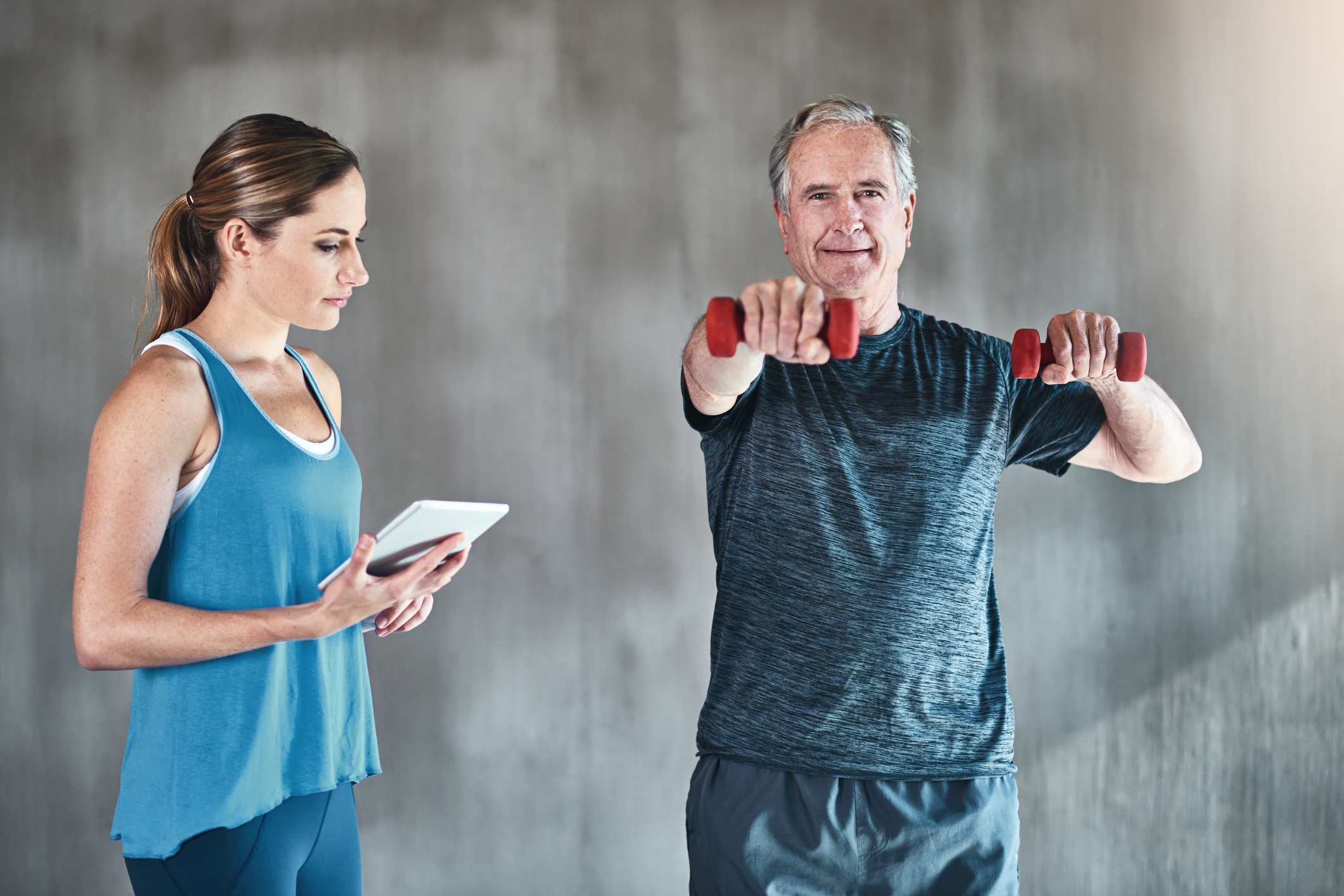
Run Cadence PT: This is a great app created by our friends at Lake Washington PT, designed to help runners, coaches, and clinicians apply the simple cadence metric to running (hint: cadence = steps/minute). Research has shown cadence to play a key role in addressing common running-related injuries, and this app provides an easy way to help runners reduce their step length and prevent, or even heal, injuries.
Coach’s Eye: Typically used as a video platform for coaches and athletes, PT’s are now using this app as an innovative way to record, review and refine patient’s movements. With it, you can easily improve your patients’ overall movements and provide instant feedback to get them feeling better, faster.
Muscle Premium by Visible Body: This app provides a 3D guide to the anatomy and function of muscles, bones, ligaments, bursae, and joints. Typically, the app is used as a reference or learning app, providing the needed visual aid to make it easier to explain normal function and injuries to patients. This is great for orthopedic specialists, kinesiologists, sports medicine practitioners, physical therapists, massage therapists, and students.
PT Timer: Stretch & Exercise: Sure, most phones have their own built-in timers these days, but this app is different. PT Stretch by Qi Analytics, LLC, consists of a timer, counter, tracker, and communication platform that ensures no steps are shorted or missed in your rehabilitation therapy process. It also allows you to share your exercises or routines with notes and images, making it another great communication app for physicians to use with their patients.
Instant Heart Rate: This app, made by Azumio, is the first mobile heart rate monitor aimed to track your heart rate during fitness. The app includes a slider that communicates the target heart rate for your age during different activity levels, ranging from resting to athletic elite. Another perk resides in the detailed analytics as the app tracks your heartbeat every day to identify trends and monitor differences. If our word isn’t enough, know that various Olympic athletes and professional bodybuilders also use Instant Heart Rate by Azumio.
Dexteria – Fine Motor Skills: App-creator, Binary Labs Inc., has developed a whole line of Dexteria award-winning apps for occupational therapists and their patients. Their flagship app, Dexteria – Fine Motor Skills, offers hand and finger activities to improve handwriting, motor control, and coordination for children and adults. The app automatically tracks and reports the patient’s progress, and therapists, teachers, or parents can email the reports to themselves directly in the app. Occupational therapists can also report issues to the developers and access new features to help influence the evolution of the Dexteria line of products.
Rehab Coach – CVA Stroke Rehabilitation Recovery: Aimed at helping patients recover from cerebrovascular accidents (CVA), the app contains several exercises to help patients improve memory, alphabet learning, color recognition, and facial muscle strength post-stroke. Created by Black Frog Studios, LLC, the app is only available for Android devices but is free with ads.
Luminosity – Brain Training: Available for both Android and Apple devices, Luminosity is a cognitive training program that offers over 40 activities (and counting) aimed at improving memory, speed, logic, problem-solving, math, and speech patterns, among other focuses. While the app isn’t intended for therapy environments, it offers a great supplemental addition to traditional occupational therapy. Patients can practice skills using the clever games and puzzles in the app and will have access to personalized progress reports. Plus, the app is available in English, Spanish, and other languages.
Read more: Our Five Favorite Occupational Therapy Pediatric Apps
My Aphasia Coach: Designed to help patients improve their language learning capabilities, My Aphasia Coach is a useful training tool to supplement traditional speech therapy. Therapists can assign homework to their patients through the app, and the app will automatically increase the difficulty setting for the patient as they complete assignments. Therapists can monitor progress and assess skills as the patient works through their app between appointments.
Conversation Therapy: Created by Tactus Therapy, this app is designed to help patients practice communication strategies to improve their ability to share thoughts and feelings in therapy environments. While traditional speech-language apps focus on basic vocabulary, this app asks thought-provoking questions with images and pictures to help the patient form clear, organized thoughts and speech. Therapists can easily customize the app for each patient, including selecting age-appropriate subjects, running group therapy sessions, and adding, removing, or personalizing topics relevant to each patient. Therapists can also run reports to track progress and assess skill levels as the patient completes assignments.
—
Editor’s note: This list was updated February 2, 2021.
Posted by Kostas Pantremenos in Apps on January 23, 2022
* tl;dr exercises videos
* Simple, short, and easy to use app
* Macro/Calorie/One Rep Max Calculators
It’s like having an instant personal trainer to check your form with.
MuscleWiki is a community built upon the principle that fitness should be simple. The difficulty lies in the journey – not the directions. This is an app where access to fitness related information is immediately accessible and easily digested. There is no need for bloated videos or hyper marketing, just direct access to what you need to achieve your fitness goals.
This app allows you to centre in on any body part, for example the chest and will give you a number of exercises which will train that body part. Information is presented in both gif and descriptive form to enable an easy understanding of the exercise.
Additionally, there are tools to allow you to calculate macros and count calories in line with your goals.
NOTE: This app downloads the videos to your phone as you load them. Please do so on WiFi as this may use your data plan.
Posted by Kostas Pantremenos in Apps, TBI on November 22, 2021

Using mobile apps is an excellent way to work on recovery after brain injury from the comfort of your own home. There are hundreds of apps designed to help individuals adapt to life after brain injury.
While it’s nice to have so many choices, it can also feel overwhelming. To save you time and energy, we’ve put together this list of the best apps for brain injury patients.
Click the links below to jump to a specific section:

A brain injury can affect a wide range of cognitive functions including memory, reasoning, and attention. The following apps were designed to help brain injury patients sharpen their mental skills through the repetition of cognitive rehabilitation exercises.
We also included some speech therapy apps for those who want to improve their communication abilities too.
First up on our list is the CT Speech and Cognitive Therapy App. This top-rated app was developed by speech-language pathologists to encourage brain injury patients to practice the exercises and activities needed to stimulate the brain and promote adaptive changes.
Every brain injury is unique and depending on its location, will affect different functions. The CT Speech and Cognitive Therapy App includes over 100,000 therapy exercises that target a variety of speech and cognitive skills such as:
Therefore, the CT Speech and Cognitive Therapy app can be beneficial for brain injury patients with nearly any sort of cognitive impairment. It even adapts to your ability level to ensure you’re provided with the right amount of challenge to keep you motivated.
Spaced retrieval is one of the most effective ways to improve short-term memory, according to memory experts. This method involves memorizing a fact, waiting one minute, quizzing yourself, then waiting five minutes, etc…
As you quiz yourself at longer and longer intervals, you cement the information into your memory. The problem is, many brain injury patients with memory problems struggle to remember when to quiz themselves.
This is where the Spaced Retrieval Therapy App can help. Simply enter the information you want to remember into the app, and the app will send you prompts and alerts when it’s time to quiz yourself.
Elevate offers a wide range of cognitive games that can be used to target your specific cognitive goals. Additionally, many of the games have real-world applications, such as learning how to calculate change or percentages.
Some of the games are especially helpful for brain injury patients. For example, one game involves typing in the best synonyms for a word without using a list. This can help individuals who struggle with language difficulties like aphasia develop their vocabulary.
The Let’s be Social app is great for brain injury patients who want to improve their conversational skills and relearn appropriate behavior.
Skills you can practice with the app include:
Sometimes, individuals may become anxious because of the effects of their brain injury and withdraw from social environments. This app helps brain injury patients become more confident in their social interactions.
Brain Synch is an app that encourages users to get creative and engage both hemispheres of their brain. Some activities that the app uses to do this involve matching shapes, tracing lines, and recognizing patterns.
It also offers two modes to choose from. You can either challenge yourself and play against the clock or take things easy in Zen mode and go at your own pace.

Accessibility apps can help brain injury patients live more independently. Whether it’s helping you organize your to-do list or breaking tasks down into step-by-step instructions, these apps can be real life-savers for traumatic brain injury survivors.
The Qcard app was developed by an actual brain injury survivor who was frustrated by his inability to remember important information.
Qcard is more than just a reminder app. It helps people with executive function and memory issues manage their lives in a simple and intuitive way. It even guides you through complex tasks such as doing laundry, cooking a meal, or following your morning routine.
Additionally, Qcard lets you connect with loved ones so you can delegate and manage tasks together.
Sometimes, individuals can struggle with their reading comprehension skills after traumatic brain injury. CanPlan is a planning app that helps break any task down into illustrated, easy-to-follow steps.
For brain injury patients with hearing loss, this app will revolutionize your communication abilities by enabling you to use a phone again. RogerVoice uses voice recognition software to provide a real-time transcript of what the other person on the phone is saying.
AccessNow is a crowdsourcing app that can help individuals with brain injuries determine the accessibility status of various locations. Users rate and review places based on how accessible it is, which is very helpful if you use a wheelchair to get around. You can search for specific locations or just look to see what’s nearby.
It’s not just for people with mobility impairments either. Maybe you want to find a quiet place that won’t overload your senses? AccessNow can help you with that. You can even add places to the map as well to help others with similar needs find that spot.

Medical apps help brain injury patients keep track of all their medical information and prescriptions. They can be especially helpful in case of an emergency.
Medisafe is an app that can help individuals who struggle with medication management. It provides clear instructions and reminders about when to take each medication and informs you when it is time for a refill on your prescription.
The app also allows for communication with family members’ devices and can connect to your Apple Watch so you can be reminded even if you don’t have your phone on you.
The In Case of Emergency app allows brain injury patients to store their medical information in a convenient place for medical personnel to find. Just enter your information and turn the app on. It will keep a persistent notification on the lock screen that shows your emergency contacts, blood type, allergies, medication, and other info.
For iPhone users, this function is already built into your phone. Here are the steps to enable it:
Making sure that medical information and emergency contact information are easy to find provides peace of mind to both the brain injury patient and their loved ones.
There are a variety of apps available for brain injury patients. Even if the app is not specifically created for brain injury rehabilitation, finding new ways to be as functional and independent as possible in your daily life is always helpful.
The key to recovery after brain injury is to consistently practice affected functions. This helps stimulate the brain and encourages it to make adaptive changes.
The outcomes of every brain injury are unique and whether you’re looking to improve your memory, attention, visual processing, or speech skills, apps can help you practice the repetitions necessary to improve them.
Medically reviewed by Elizabeth Denslow, OTR/L — written by Flint Rehab
Elizabeth Denslow, OTR/L, CLT is an occupational therapist with experience working in outpatient and home health settings.
Posted by Kostas Pantremenos in Apps, REHABILITATION on October 9, 2021
The key to successful brain injury recovery and stroke rehab is habit changes!
Our habits can have a negative or a positive effect on our daily lives. Rehabit helps you to create your own healthy lifestyle and wellness habits. Build your self-management skills and confidence to take control of your life after stroke or any brain injury. Stay your stroke rehab or brain injury rehab on track with science-backed daily missions and custom content for stroke survivors and those with brain injury. Rehabit will guide you on the path to improved physical, mental, emotional, and social health.
*Q. Why Rehabit?
Recovery journey after brain injury or stroke can feel daunting. But by making small wellness habit changes, you can put yourself on the path to stable health. And consistency is the best way to get your body on a healthier track.
Rehabit provides a holistic wellness self-management program based on a habit-centered approach. Rehabit explains the how and why behind brain injury recovery tips, making it easy and satisfying to adopt healthy wellness habits into your lifestyle.
Engaging regular activities is essential in your stroke rehab or any other brain injury rehab journey. Also it will boost your recovery if you try to consistently participate. With Rehabit’s habit tracker, you can create your own wellness habits and check in each day to see your progress. Also, keeping a Journal every day helps assist your routine and manage your mental health. With Rehabit’s journal, you can track your feelings and how they have changed over time.
Rehabit is designed by Neofect, a company specializing in digital rehab solutions. (www.neofect.com)
*Q. Why do habit changes matter for rehabilitation?
Have you heard about ‘Neuroplasticity’? It is the brain’s natural healing superpower of rewiring and reorganizing itself. This enables you to develop new abilities and skills through practice after stroke or brain injury. Rehabit helps you develop your own stroke recovery habits and track your wellness habits to improve your neuroplasticity as you recover from a brain injury.
What you do every day does matter!
[Start to create your own REcovery HABIT]
Our engaging and life-changing materials are based on rehabilitation strategies that facilitate neuroplasticity, helping your brain to adapt and make changes that will allow you to return to your routines and get your life back on track. Believe in yourself.
Practice every day. You can do this!
1. Lasting habit changes
Rehabit provides the customized habit tracker feature to make you easy to track and adopt healthy wellness habits into your lifestyle.
2. Everything you need to create your own recovery habits
Get easy-to-read daily articles and educational material on brain injury recovery, stroke rehab, behavioral health, lifestyle, nutrition, mindfulness, and more.
3. Comprehensive video exercises
Maximize your stroke recovery with daily video tutorials and professional exercise demonstrations.
Exercise content is tailored to your capabilities to help you stay focused, consistent, and successful.
4. Track and analyze your daily progress
Just record your daily activities and mood. Rehabit will help you to take care of your mental, emotional, and physical health.
* Rehabit syncs and imports your activity data via Apple Health.
Posted by Kostas Pantremenos in Assistive Technology, REHABILITATION on July 27, 2021
The key to successful stroke recovery is habit changes!
Our habits can have a negative or a positive effect on our daily lives. Rehabit helps you to create your own healthy lifestyle habits and build your self-management skills and confidence to take control of your life after stroke. Stay on track with science-backed daily missions and custom content for you. Rehabit will guide you on the path to improved physical, mental, emotional, and social health.
Q. Why Rehabit?
Post-stroke recovery can feel daunting. But by making small lifestyle changes, you can put yourself on the path to stable health. And consistency is the best way to get your body on a healthier track.
Rehabit provides a holistic wellness self-management program based on a habit-centered approach. Rehabit explains the how and why behind stroke recovery tips, making it easy and satisfying to adopt healthy habits into your lifestyle.
Rehabit is designed by Neofect, a company specializing in digital rehab solutions for stroke survivors. (www.neofect.com)
Q. Why do habit changes matter?
Have you heard about ‘Neuroplasticity’? It is the brain’s natural healing superpower of rewiring and reorganizing itself. This enables you to develop new abilities and skills through practice. Rehabit helps you develop your own recovery habits to improve your neuroplasticity as you recover from a stroke.
What you do every day does matter!
★Start to create my own REcovery HABIT
Our engaging and life-changing materials are based on rehabilitation strategies that facilitate neuroplasticity, helping your brain to adapt and make changes that will allow you to return to your routines and get your life back on track. Believe in yourself.
Practice every day. You can do this!
1. Lasting habit changes
Rehabit explains the how and why behind stroke recovery tips, making it easy and satisfying to adopt healthy habits into your lifestyle.
2. Everything you need to create your own recovery habits
Get easy-to-read daily articles and educational material on stroke rehab, behavioral health, lifestyle, nutrition, mindfulness, and more.
3. Comprehensive video exercises
Maximize your recovery with daily video tutorials and professional exercise demonstrations.
Exercise content is tailored to your capabilities to help you stay focused, consistent, and successful.
4. Track and analyze your daily progress
Rehabit will help guide you to stay on track with your personal wellness goals.
Posted by Kostas Pantremenos in Assistive Technology on April 4, 2020
The NHS Apps Library helps patients and the public to find trusted health and wellbeing apps. These digital tools have been assessed by the NHS…
Search NHS Apps Library – NHS
Posted by Kostas Pantremenos in Assistive Technology on September 26, 2019
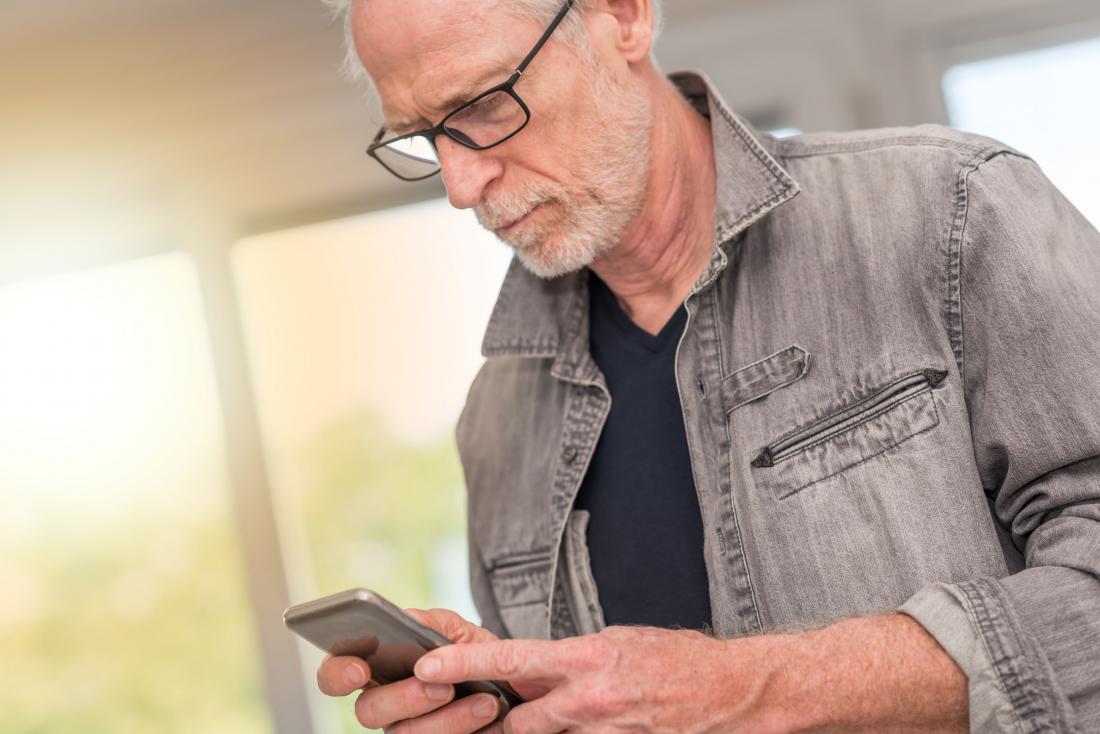
Smartphone apps can assist with stroke recovery and rehabilitation.
More than 795,000 individuals in the United States have a stroke each year, and around 140,000 of these people die from stroke.
Ischemic strokes — wherein “blood flow to the brain is blocked” — account for roughly 87 percent of all strokes.
Stroke can cause significant injury to the brain that may result in many long-term problems.
For example, communication, concentration, memory, and executive function, as well as spatial awareness, are all cognitive functions that may be impacted by stroke.
Stroke can also trigger mental health issues such as anxiety and depression, as well as movement and coordination problems, paralysis, difficulties swallowing, visual impairment, and urinary incontinence and loss of bowel control.
The faster a person is treated after stroke, the more likely they are to recover from it. Surveys have shown that people who “arrived at the emergency room within 3 hours” of their first symptoms of stroke had “less disability” 3 months later than those who were treated later.
While some people recover quickly from stroke, others may need long-term support. Apps are available to help aid the stroke recovery process. They can help you or your loved one to track appointments and medications, provide language therapy, train the brain, and even lower some risk factors for future strokes.
Medical News Today have selected the top 10 apps to assist with stroke recovery.
Android: Free
iPhone: Free

Keep track of schedules with a shared color-coded calendar and set reminders for yourself or other family members so that medical appointments and medications are not missed.
Shopping and to-do lists can also be shared with everyone in the family to ensure that you have everything you need from the grocery store. All items added to lists are viewable instantly in real-time.
Android: Free
iPhone: Free

According to the app, mistakes with medicine use and dosage tracking result in 50 percent of individuals not taking medication as prescribed, 700,000 hospital visits, 125,000 deaths each year, and 44 in every 100 prescriptions not being collected from the pharmacy.
Whether you are taking one drug dose or multiple doses each day, it can be challenging to remember to take the right pill at the right time. Medisafe takes the stress out of having to remember if you or your loved one took their medications correctly.
Android: Free
iPhone: Free
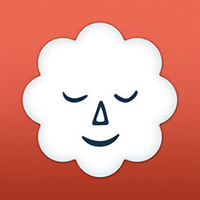
Stop, Breathe & Think is a meditation and mindfulness app that helps to decrease stress and anxiety. The app provides guided meditations, breathing exercises, and yoga and acupressure videos to help you check in with your emotions.
Stop, Breathe & Think says that taking a few minutes every day to feel calm is just as important as getting frequent exercise and will reduce stress and promote peace of mind.
Android: $2.99
iPhone: $2.99
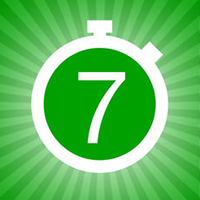
If you are unsure of how to start an exercise routine after stroke, the 7 Minute Workout Challenge app could be the perfect app for you. The 7-minute workout is a research-backed exercise program that has become a hit internationally.
Scientists have put together 12 exercises to perform for 30 seconds each with a rest period of 10 seconds in-between. The exercise sequences are easy to do, require no equipment, and can be done anywhere.
Android: $59.99
iPhone: $59.99
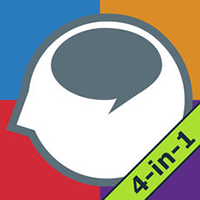
Language Therapy 4-in-1 is a scientifically proven speech therapy app that aims to improve speaking, listening, reading, and writing in those with aphasia. Get started by giving their free version, Language Therapy Lite, a try today.
Research led by the University of Cambridge in the United Kingdom found that using the app for 20 minutes each day for 4 weeks showed improvements in all study participants with chronic aphasia.
Android: Free trial
iPhone: Free trial
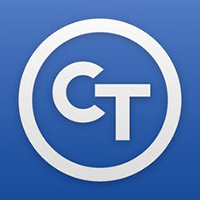
With more than 65 task categories, 100,000 exercises, and 10 levels of difficulty, Constant Therapy can help to improve cognition, memory, speech, language, reading, and comprehension skills.
Constant Therapy was developed by scientists at Boston University in Massachusetts and is recommended by neurologists, speech language pathologists, and occupational therapists. Research published in the journal Frontiers in Human Neuroscience showed a significant improvement in standardized tests for stroke survivors after using Constant Therapy.
iPhone: Free

VocalEyes is computer vision for the visually impaired. The app uses machine learning to help people with vision problems identify objects in their everyday lives. Take a photo, and the app will tell you what the camera sees.
VocalEyes’s audio response describes scenes and environments, identifies objects, label logos, and brands, reads text, detects faces, classifies emotions, recognizes ages, and distinguishes currency denominations.
iPhone: Free

If your vision is impaired after stroke or you have simply forgotten your glasses, the app can zoom in on labels and nutritional information in a grocery store and menus in dark restaurants as well as help you see how much to pay on the bill after eating out.
Glasses is simple to use. Double tapping quickly zooms in or out by 6x, while swiping uses a slow and continuous zoom method. If you have shaky hands, you can tap and hold to freeze the image on screen.
Android: Free
iPhone: Free

Elevate is a brain-training app that is designed to enhance speaking abilities, processing speed, focus, and memory. Elevate provides a personalized training program that adapts in difficulty over time to ensure you are always challenged.
Elevate features more than 40 games aimed at improving your skills, plus a workout calendar that tracks your streaks to keep you motivated. Users who train with Elevate at least three times each week have reported considerable gains in abilities and increased confidence.
Android: Free
iPhone: Free

Peak features a personal brain trainer, known as Coach, who selects the perfect workouts for you at the correct time. Choose your training exercises from Coach’s recommendations to challenge yourself and stay motivated by tracking your progress with in-depth insights.
Free games challenge your attention, memory, problem-solving skills, mental agility, coordination, emotional control, language, and creativity. Upgrade to Pro for additional features.
Posted by Kostas Pantremenos in Assistive Technology on August 14, 2019

We all like to live as independently as possible, and for disabled people, technology and apps are an invaluable aid to achieving this. It seems that everyone nowadays owns a smartphone and tablet, and with that comes a seemingly unlimited world of apps to choose from. But which should you consider and how could they enhance your life?
Here, our writers Carrie Aimes and Emma Purcell round up the top 10 apps for disabled people and why you should try them out, all updated for 2019.
AccessAble app
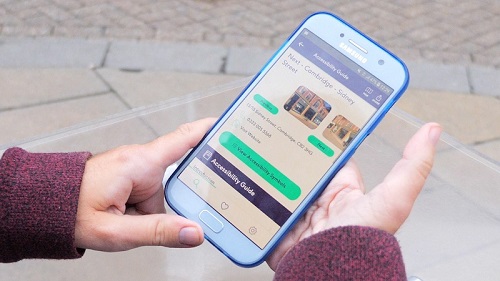
AccessAble is a UK accessible travel app that takes the chance out of going out for disabled people. The app contains 75,000 detailed access guides telling you how accessible a venue, tourist attraction or public place is for your needs.
You can use the app’s accessibility symbols to filter results and places that suit you. For example, if you enjoy shopping and you’re a wheelchair user, you would search for a shopping centre that has wheelchair access, Blue Badge parking, step-free access, ramps, lifts and accessible toilets.
There is also accessibility information for people with other mobility issues, sensory impairments and intellectual disabilities. Moreover, you can check out photographs of a venue and save access guides for later.
AccessAble is free to download for iOS and Android devices.
Dragon Anywhere app
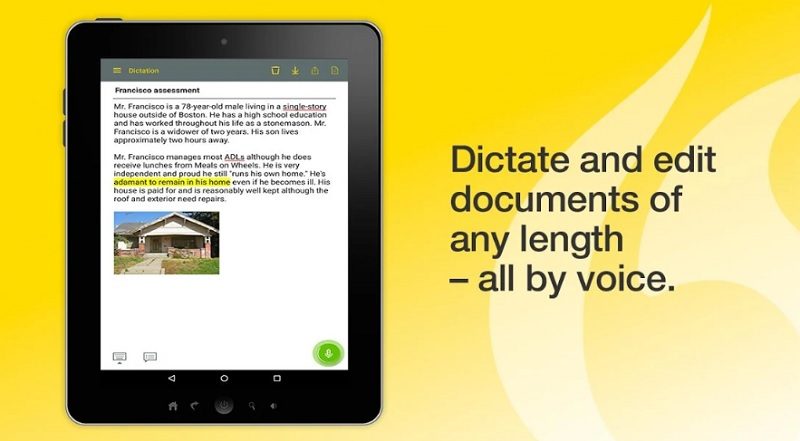
This dictation app enables you to create and edit documents of any length on your phone, tablet or laptop, all using your voice. By simply speaking into the device you can create text messages, compose emails and edit long documents, and then sync them with your Dropbox or cloud so they can be accessed on your computer.
The Dragon Anywhere app is aimed at busy professionals needing to work while commuting. But it has obvious benefits for disabled people too. Apple iPhone and Andriod users can download it for free, but after a trial, you’ll have to pay (£9.99 a month and £99.99 a year).
Our tech writer Tom Housden has tried out this app, along with some of Dragon’s other dictation apps. See his article on dictation apps for a full breakdown of how it works and what else is on offer.
Changing Places Toilet Finder app
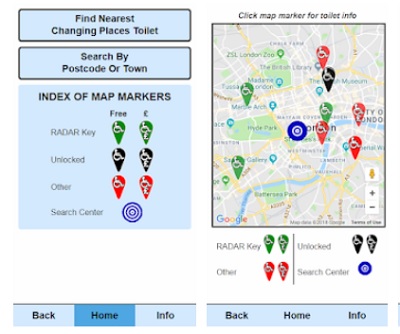
No matter what your disability, being able to reach an accessible public toilet in good time is a daily challenge. The free Changing Places Toilet Finder app, from the RADAR Key company, lists thousands of accessible toilets across the UK.
It is a comprehensive guide of more than 1,000 Changing Places toilets, which are extra-large toilets with changing facilities. The app shows you how far you are from one of the toilets, how to get there, the opening hours of the toilet, how to open the door, whether it is normally locked and information regarding hoists and slings.
The app is free and available on iTunes for iPhone users and Google Play for Android users. You can also visit the Changing Places website to learn more about Changing Places toilets.
HelpTalk app
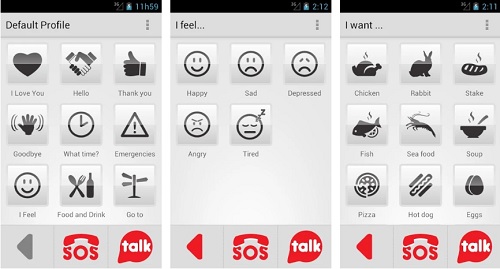
This app is a communication aid for people who are non-verbal or have a speech impairment. You can create a profile containing the spoken actions most useful to any situation, such as a specific event, travelling, working, education, socialising, plus much more, and suited for your day-to-day life. In addition, for people with reduced dexterity, there are a big Yes/No buttons.
This app is available in multiple languages and includes an emergency contact and location request services if you were to be in danger or go missing. HelpTalk can only be downloaded on Google Play.
Disabled Motoring app
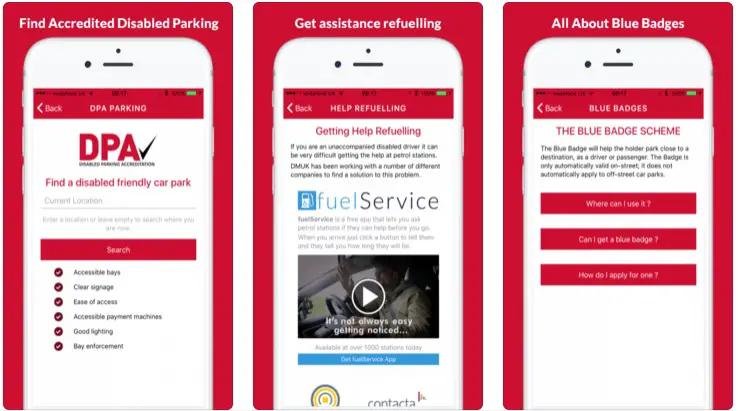
Disabled Motoring UK is a campaigning charity and magazine that aims to make life easier for disabled drivers, passengers and Blue Badge holders. Its app allows you to find accredited disabled parking, get help refuelling your vehicle and browse information on Blue Badges, as well as the latest news from the charity.
The app is free to download on iOS and Android devices but, for a fee, there are additional benefits you can sign up for. Becoming an online member will give you access to the members’ area on its website, as well as a monthly newsletter.
Alternatively, you can become a full/associate member and receive the monthly magazine and discounts on everyday goods, from groceries to holidays. It’ll also enable you to get help with motoring-related problems, such as parking tickets and local authority issues. The full/associate membership will cost £24 a year.
To find out more about Disabled Mobility UK, visit its website, and download the app on Google Play.
Physiotherapy Exercises
The Physiotherapy Exercises app contains more than 1,000 images illustrating 600 exercises suitable for those with spinal cord injury and neurological conditions. Search, select and save exercises for future reference and even suggest others if you wish.
Developed by physiotherapists, this is an invaluable source that does not require an internet connection once downloaded. Get the Physiotherapy Exercises app for free on iTunes.
UPDATE 2019: The developer of this app needs to update it to work with iOS 11.
Red Panic button app

To be able to immediately and urgently notify a number of contacts of your whereabouts can be hugely beneficial if you’re disabled. If you’re older, have learning disabilities, or live on your own but rely on others, you might want to consider the Red Panic Button.
One tap of the red button sends alerts to your contacts via text, email, Facebook and Twitter. All you need to do is enter the details of those you wish to alert ahead of using the app, and they will receive a Google Maps link with your location.
Many features are free to both Android and iOS users, though there is the option to upgrade at a fee, which means you can even send a photo attachment and record a 10-second voice message with your alert. Gain more independence and security with this handy and easy to use Red Panic Button app by visiting iTunes or Google Play.
Be My Eyes app
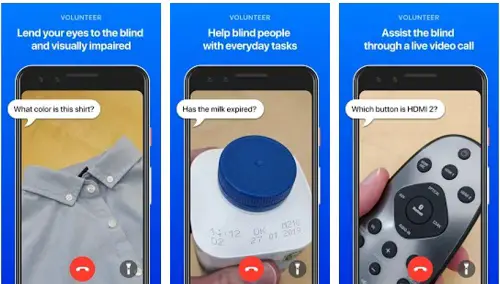
This award-winning app allows people who are blind or visually impaired to request help from a sighted volunteer. You can receive assistance through a live video connection to a global network of volunteers who can assist you with a range of tasks.
The sighted volunteers will receive a notification on their phone when you ask for assistance. As soon as the first volunteer accepts the request, a live video link will be connected to you and the sighted volunteer.
You can then use your rear-facing camera to allow the sighted volunteer to see the item or subject you need assistance with or descriptions of. Support can be as simple as checking expiry dates or more complicated tasks such as navigating a public place.
The app can be used at any time of the day, anywhere in the world and is available in more than 180 languages. It is free to download on iTunes and Google Play.
Have You Heard
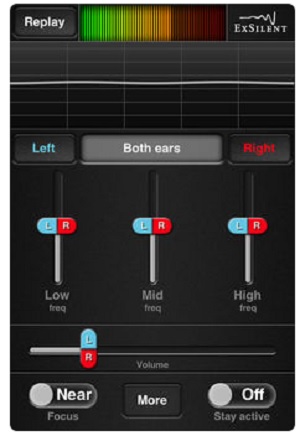
Designed for people with hearing impairments, this app will amplify voices around you so that you can better understand conversations with people in busy and loud places, such as with a friend in a restaurant or a colleague in a meeting.
You can focus on conversations either close by or further away by using the ‘focus near/far’ feature, and adjust the volume to suit you. If you still haven’t quite heard something, you can replay the last 20 seconds of a conversation at the press of a button.
To use it, you’ll need to connect a headphone to your phone. It’s free and only available on iTunes for iPhone users.
UPDATE 2019: The developer of this app needs to update it to work with iOS 11.
Uber taxis app
Having a disability means that public transport often isn’t an option, leaving you to rely on taxis. To stop you getting stranded, you can download the Uber app, allowing you to request a taxi ride from where you are using your phone.
To do so, simply create an account with your card or PayPal – no cash required – and select a vehicle to suit your needs. If you do want to plan ahead, the Scheduled Rides feature allows you to book a vehicle up to 30 days in advance.
Uber has two services aimed at helping disabled passengers get around. Its uberACCESS taxis are equipped with a rear-entry ramp and four-point restraints, enabling wheelchair users to ride safely and comfortably with one additional passenger. Its other accessible service, uberASSIST, is designed for those who don’t need a wheelchair-accessible vehicle, but require additional assistance on their journey.
All uberACCESS and uberASSIST partners have received Disability Equality Training from Transport for All and Inclusion London, and both cost the same as using uberX, one of Uber’s lowest-cost services.
UberACCESS (previously called uberWAV) is available in London, Manchester and Birmingham, and uberASSIST is available in London, Manchester, Birmingham, Leeds, and Sheffield. There are plans to roll out both into other areas soon.
Uber is free to download to Android and iOS phones, from Google Play or iTunes.
By Carrie Aimes and Emma Purcell
Find out more about Emma on her blog, Rock For Disability, and Carrie by visiting www.lifeontheslowlane.co.uk.
Check out…
Get in touch by messaging us on Facebook, tweeting us @DHorizons, emailing us at editor@disabilityhorizons.com
via Assistive technology: top 10 apps for disabled people
Posted by Kostas Pantremenos in REHABILITATION on September 13, 2018
To conduct systematic review to better define how medical mobile applications (apps) have been utilized in environments relevant to Physical Medicine and Rehabilitation.
PUBMED, IEEE, ACM Digital Library, SCOPUS, INSPEC, and EMBASE
A 10-year date limit was utilized, spanning publication dates from June 1, 2006 to June 30, 2016. Terms related to Physical Medicine and Rehabilitation as well as mobile apps were used in ten individual search strategies.
Two investigators screened abstracts and applied inclusion and exclusion criteria. Full-length articles were retrieved. Duplicate articles were removed. If a study met all criteria, the manuscript was reviewed in full.
Specific variables of interest were extracted and added to summary tables. Summary tables were used to categorize studies according themes, and a list of app features was generated.
The search yielded abstracts from 8,116 studies, and 102 studies were included in the systematic review. Approximately one-third of the studies evaluated apps as interventions while the remaining two-third of the studies assessed functioning of the app or participant interaction with the app. Some apps may have positive benefits when used to deliver exercise or gait training interventions, as self-management systems, or as measurement tools.